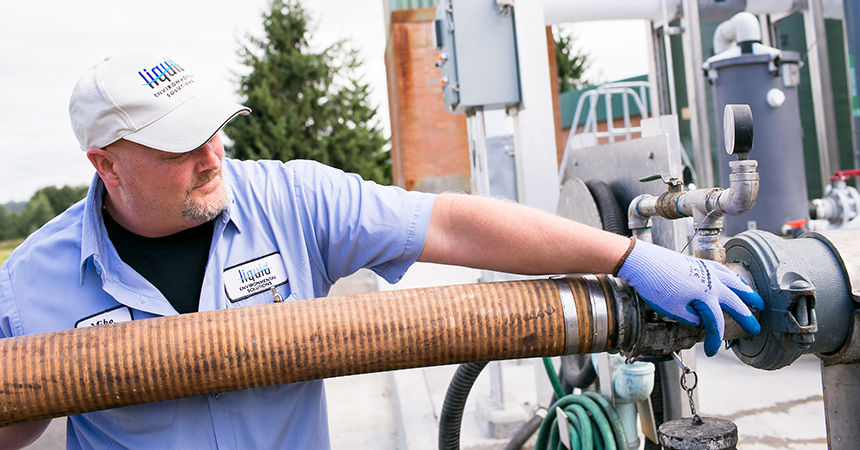
This is the second in a series of posts on energy resilience. The first looked at how solar + storage can help make homes more resilient to outages. This post explores how energy resilience can be scaled up to benefit entire communities.
Every community relies on a water treatment plant, also known as a water resource recovery facility, to treat water from homes and businesses so it can be safely reused or released into the environment. Water treatment is an energy-intensive process – treatment plants are among the largest energy-consumers in almost every community and have high operation costs. Adding energy efficiency upgrades, renewable energy and energy storage technology can help boost communities’ resilience to disasters while delivering benefits to utilities and their customers.
Water resource recovery facilities have some unique qualities that make them ideal places to invest in resiliency measures. They operate constantly, all day every day, year-round. Electricity is required for almost every stage of the treatment process. Some water resource recovery facilities can produce biogas from the treatment process, which can then be used to power the facility. Adding solar panels or wind turbines is another possibility.
“It’s hard to imagine a better opportunity,” said Dave Moldal, senior renewable energy program manager at Energy Trust. “People are just beginning to think about making these investments, but the technology is available. It’s now up to facility operators, engineers and utilities to work together to make it happen.”
Energy Trust provides technical assistance and incentives for energy efficiency and renewable energy upgrades at water resource recovery facilities. These include planning and development grants that offset the cost of planning upgrades.
Shared benefits for cities, residents and utilities
Benefits include lower utility bills for customers and communities. When facilities like Gresham’s wastewater treatment plant produce their own energy, they reduce costs for the whole community. According to the city of Gresham, Gresham’s plant saves the city $600,000 a year in electricity costs.
During periods of high demand for energy, water resource recovery facilities could reduce their energy use by drawing power from on-site batteries. They may even be able to supply power to the grid. And by reducing their energy use during times of high demand, these facilities can help reduce strain on the grid, benefiting all customers.
Upgrading water resource recovery facilities can also help utilities meet clean energy goals more efficiently. By storing excess renewable energy during periods of low demand and supplying it back to the grid during high demand, wastewater treatment plants can help smooth out the fluctuations in energy supply, making it easier to integrate more renewable sources without compromising grid stability.
Support from Energy Trust
Turning these critical facilities into sources of community-wide resilience requires collaboration and investment. In 2023, Energy Trust sponsored a workshop focused on renewable energy systems and resilience advancements, where plant managers, operators, and industry experts across Oregon discussed strategies to enhance the energy performance of water and wastewater facilities.
“Pairing resilience resources such as battery energy storage with utility flexible load programs is a win-win for water treatment facilities,” said Audrey Burkhardt, manager of resilience and energy storage for Portland General Electric who spoke at the event. “By enrolling their battery in a program such as PGE’s Energy Partner On-Demand, they not only help support grid reliability but also unlock valuable incentive payments, reinforcing their own operational resilience while also supporting Oregon’s clean energy future.”
Visit our website to learn more about incentives for industrial facilities.
